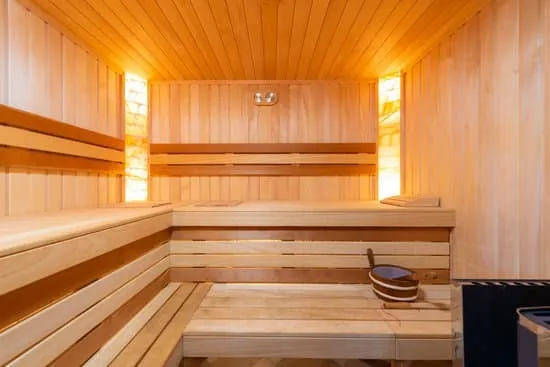Aromatherapy Steam: Sensory Healing for Emotional Balance

The sense of smell is our most primitive sense, directly connected to the limbic system—the brain's emotional center. When we introduce therapeutic aromatic compounds into the heated environment of a sauna, we create a multi-sensory healing experience that addresses physical, emotional, and spiritual well-being simultaneously. Aromatherapy steam sessions represent the evolution of traditional sauna practice, combining ancient heat therapy with the therapeutic properties of plant essences.
For thousands of years, cultures around the world have recognized the healing power of aromatic plants. From the frankincense and myrrh of ancient Egypt to the eucalyptus branches in Finnish saunas, humans have instinctively understood that scent carries medicine. Modern science now confirms what our ancestors knew intuitively—that aromatic molecules can profoundly influence our physiology, psychology, and emotional state.
The Science of Scent and Heat
When essential oils are introduced into a heated environment, the molecules become volatile, dispersing rapidly through the air. As you inhale, these aromatic compounds travel through your nasal passages, where they interact with olfactory receptors. Research published by the National Institutes of Health demonstrates that different essential oils can trigger specific neurological and physiological responses, from reducing anxiety to enhancing cognitive function.
The heat of the sauna amplifies these effects in several ways. First, the elevated temperature increases the rate at which aromatic molecules volatilize and spread. Second, the heat opens your airways and pores, allowing for greater absorption of therapeutic compounds both through inhalation and trans dermal absorption. Third, the relaxed state induced by heat makes you more receptive to the subtle influences of aromatherapy.
According to The National Association for Holistic Aromatherapy, essential oils contain hundreds of chemical constituents that work synergistically to produce therapeutic effects. In the context of sauna therapy, these effects are magnified, creating what some practitioners call "aromatic heat synergy."
Essential Oils for Different Wellness Goals
Choosing the right essential oil for your sauna session depends on your intentions and current needs. Here's a comprehensive guide to the most effective oils for various therapeutic purposes.
For Deep Relaxation and Stress Relief
Lavender (Lavandula angustifolia): Perhaps the most versatile essential oil, lavender has been extensively studied for its calming properties. Research shows it reduces cortisol levels, slows heart rate, and promotes parasympathetic nervous system activity. In the sauna, lavender creates a sanctuary of peace, ideal for evening sessions or when processing emotional stress.
Roman Chamomile (Anthemis nobilis): With its sweet, apple-like aroma, chamomile brings gentle sedation without drowsiness. It's particularly effective for those who carry tension in their muscles or experience anxiety-related physical symptoms. The heat helps chamomile's relaxing properties penetrate deeper into tissues.
Ylang Ylang (Cananga odorata): This exotic flower oil slows rapid breathing and heart rate, making it perfect for those who tend toward anxiety or panic. Its euphoric quality can shift mood rapidly, though some find the scent intense—start with just one or two drops.

For Mental Clarity and Focus
Peppermint (Mentha piperita): The cooling sensation of peppermint creates an interesting contrast to the heat, sharpening mental focus and enhancing alertness. Studies indicate peppermint improves cognitive performance and memory. Use it in morning sessions or when you need mental energy for the day ahead.
Rosemary (Rosmarinus officinalis): Long associated with memory and concentration, rosemary stimulates circulation to the brain while providing antioxidant protection. Research from Frontiers in Aging Neuroscience suggests rosemary aromatherapy may support cognitive function in older adults.
Lemon (Citrus limon): Bright and uplifting, lemon oil enhances mood while promoting mental clarity. Its antimicrobial properties also help purify the air in your sauna space. The citrus scent combines beautifully with eucalyptus for a refreshing experience.
For Respiratory Support
Eucalyptus (Eucalyptus globulus): The traditional choice for sauna aromatherapy, eucalyptus opens airways, thins mucus, and supports respiratory function. Its cooling menthol-like quality creates a sensation of easier breathing even in intense heat. This is the cornerstone oil for respiratory wellness in steam therapy.
Tea Tree (Melaleuca alternifolia): Highly antimicrobial, tea tree oil supports immune function while clearing congestion. Its medicinal scent reminds us that healing can be both effective and pleasant. Combine with eucalyptus for enhanced respiratory support.
Pine (Pinus sylvestris): Evoking forest bathing experiences, pine oil brings the healing essence of conifers into your sauna. It supports respiratory health while promoting a sense of groundedness and connection to nature—perfect for the practices described in our guide to thermal mindfulness.
For Emotional Healing and Balance
Frankincense (Boswellia carterii): Used for millennia in spiritual practices, frankincense deepens meditation and promotes emotional release. Its warm, resinous aroma creates sacred space, ideal for combining with the techniques in our sauna meditation guide. Many practitioners report profound emotional insights when using frankincense in heated meditation.
Bergamot (Citrus bergamia): This citrus oil uniquely combines uplifting and calming properties, making it ideal for emotional balance. Research suggests it reduces anxiety while enhancing positive mood states. Use bergamot when you need to process difficult emotions without becoming overwhelmed.
Geranium (Pelargonium graveolens): With its balancing properties, geranium helps regulate both emotions and hormones. Women often find it particularly supportive during times of hormonal fluctuation. Its rose-like scent is both comforting and sophisticated.
Creating Aromatic Blends for Sauna Use
While single oils offer powerful benefits, thoughtfully crafted blends can address multiple wellness needs simultaneously. Here are proven combinations for different intentions:
Stress Relief Blend:
- 3 drops Lavender
- 2 drops Roman Chamomile
- 1 drop Frankincense
Use this blend for evening sessions when you need to release accumulated tension and prepare for restful sleep.
Respiratory Wellness Blend:
- 3 drops Eucalyptus
- 2 drops Tea Tree
- 1 drop Peppermint
Ideal during cold and flu season or when you want to deeply cleanse your respiratory system.
Mental Clarity Blend:
- 2 drops Rosemary
- 2 drops Lemon
- 1 drop Peppermint
Perfect for morning sessions when you want to start your day with sharp focus and positive energy.
Emotional Balance Blend:
- 2 drops Frankincense
- 2 drops Bergamot
- 1 drop Ylang Ylang
Use this sophisticated blend when processing emotions or engaging in deep self-reflection.
Safe Application Methods
Proper application of essential oils in your sauna ensures both safety and optimal therapeutic benefit. Never apply oils directly to hot stones, skin (undiluted), or sauna wood, as this can cause damage or adverse reactions.
The Water Infusion Method
This is the most common and safest application method:
- Fill a ladle with clean water
- Add 2-5 drops of essential oil to the water
- Stir gently to disperse (oils don't fully dissolve in water)
- Pour slowly over hot sauna stones
- Inhale deeply as the aromatic steam rises
Start with fewer drops and increase gradually. Your sense of smell is highly individual, and what feels perfect to one person may be overwhelming to another. Remember that in the heat, your olfactory sensitivity increases, so less is often more.
The Diffuser Method
For electric saunas or spaces without stones, a heat-safe aromatherapy diffuser offers an alternative. Place the diffuser in a corner where it won't be accidentally knocked over, and use the same drop guidelines as the water method. Ensure your diffuser is rated for high temperatures if using inside the sauna itself.
The Towel Method
Add a few drops of essential oil to a damp towel and place it near (not on) the heat source. As the towel warms, it releases the aromatic compounds gradually. This method offers more subtle, sustained aromatherapy throughout your session.
Safety Considerations and Contraindications
While aromatherapy is generally safe when used properly, certain precautions ensure positive experiences:
- Always use therapeutic-grade essential oils from reputable suppliers. Synthetic fragrances can release harmful compounds when heated.
- Pregnancy requires caution—avoid oils like clary sage, rosemary, and certain others. Consult your healthcare provider.
- Some oils are photosensitizing (especially citrus oils). If your sauna routine includes UV exposure, avoid these oils before tanning.
- Respiratory conditions like asthma may be aggravated by certain oils. Start with very small amounts and monitor your response.
- Children require lower dosages—half the adult amount is a good guideline for kids over 6.
- Pets are more sensitive to essential oils. Ensure adequate ventilation or practice aromatherapy when pets aren't present.
As noted in our breathwork techniques article, combining intentional breathing with aromatherapy can enhance both practices, but always prioritize your comfort and safety.
| Oil | Primary Benefit | Best Time | Cautions |
|---|---|---|---|
| Lavender | Relaxation & Sleep | Evening | None for most people |
| Eucalyptus | Respiratory Support | Anytime | May irritate sensitive airways initially |
| Peppermint | Mental Clarity | Morning | Avoid if pregnant or breastfeeding |
| Frankincense | Meditation & Spiritual Practice | Anytime | May cause mild skin irritation in sensitive individuals |
| Tea Tree | Antimicrobial | Anytime | Never ingest; external use only |
Integrating Aromatherapy into Your Sauna Ritual
The most powerful aromatherapy experiences come from thoughtful integration into a complete sauna ritual. Consider creating themed sessions that align aromatherapy with your wellness goals and other practices.
Morning Energizing Ritual
Time: 6:00-7:00 AM
Temperature: 160-170°F
Aromatherapy: Lemon and Rosemary blend
Additional Practices: Brief breathwork, intention setting for the day
Duration: 15-20 minutes
Begin with a cool shower, then enter your sauna. As the space warms, add your aromatherapy blend. Practice 5 minutes of energizing breath (described in our breathwork guide), then sit quietly while visualizing your day unfolding positively. Exit feeling refreshed and focused.
Evening Relaxation Ritual
Time: 8:00-9:00 PM
Temperature: 140-150°F (lower for longer session)
Aromatherapy: Lavender and Chamomile blend
Additional Practices: Gentle stretching, meditation, journaling
Duration: 25-30 minutes
After a light dinner (at least 2 hours prior), enter your sauna with your journal. Add your calming aromatherapy blend and spend 10 minutes in gentle seated stretches. Transition to 10 minutes of meditation, then conclude with journaling any insights or emotions that arose. Follow with a warm shower and prepare for deep, restorative sleep.
Weekend Deep Healing Ritual
Time: Unhurried weekend morning or afternoon
Temperature: Start at 140°F, increase to 165°F
Aromatherapy: Frankincense and Bergamot blend
Additional Practices: Extended meditation, emotional processing
Duration: 40-45 minutes with cool-down breaks
Set aside significant time for this practice. Begin with 15 minutes at moderate heat with your chosen aromatherapy. Exit for a 5-minute cool-down with cold water on your wrists and face. Return for a second 15-minute session at higher heat, focusing on any emotions or insights arising. Take another cool-down break. Conclude with a final 10-minute session dedicated to gratitude and integration.
Sourcing Quality Essential Oils
The quality of your essential oils directly impacts both safety and effectiveness. Unfortunately, the aromatherapy market is flooded with synthetic fragrances labeled as "essential oils" and low-quality products that offer little therapeutic value.
Look for these indicators of quality:
- Botanical name listed: Quality oils include the Latin botanical name (e.g., Lavandula angustifolia, not just "lavender")
- Country of origin specified: Different regions produce oils with varying chemical profiles
- Extraction method noted: Steam distillation or cold-pressing for most therapeutic oils
- Batch testing information: Reputable companies provide GC/MS testing results
- Dark glass bottles: Essential oils degrade in light; quality products come in amber or cobalt bottles
- Appropriate pricing: If rose oil costs the same as orange oil, it's likely not pure rose
USP (United States Pharmacopeia) verification offers additional assurance of purity and quality for essential oil products.
Frequently Asked Questions
Conclusion: The Aromatic Path to Wellness
Aromatherapy steam sessions transform ordinary sauna practice into a multi-dimensional healing experience. By engaging your sense of smell—your most primitive and emotionally connected sense—you access pathways to wellness that transcend the purely physical benefits of heat therapy.
Whether you're seeking stress relief, mental clarity, respiratory support, or emotional balance, there's an essential oil or blend perfectly suited to your needs. Start simply with single oils, notice how they affect you, and gradually expand your aromatic repertoire. Keep notes on which oils and blends you prefer for different times of day and emotional states.
Remember that aromatherapy is deeply personal. What brings one person to tears of release might leave another unmoved. Honor your unique responses and trust your olfactory wisdom. Your nose knows what you need, even before your conscious mind can articulate it.
As you develop your aromatherapy practice, consider how it complements other aspects of your sauna routine—the breathwork, the meditation, the conscious presence with heat. Each element supports and enhances the others, creating a holistic wellness practice that nourishes body, mind, and spirit.
References
- National Institutes of Health. (2019). "Essential Oils and Their Constituents as Anticancer Agents." https://www.ncbi.nlm.nih.gov/pmc/articles/PMC6612516/
- National Association for Holistic Aromatherapy. "What is Aromatherapy?" https://naha.org/explore-aromatherapy/about-aromatherapy/what-is-aromatherapy/
- Frontiers in Aging Neuroscience. (2018). "Plasma 1,8-Cineole Correlates with Cognitive Performance." https://www.frontiersin.org/articles/10.3389/fnagi.2018.00014/full
- United States Pharmacopeia. "USP Verification Services." https://www.usp.org/verification-services

